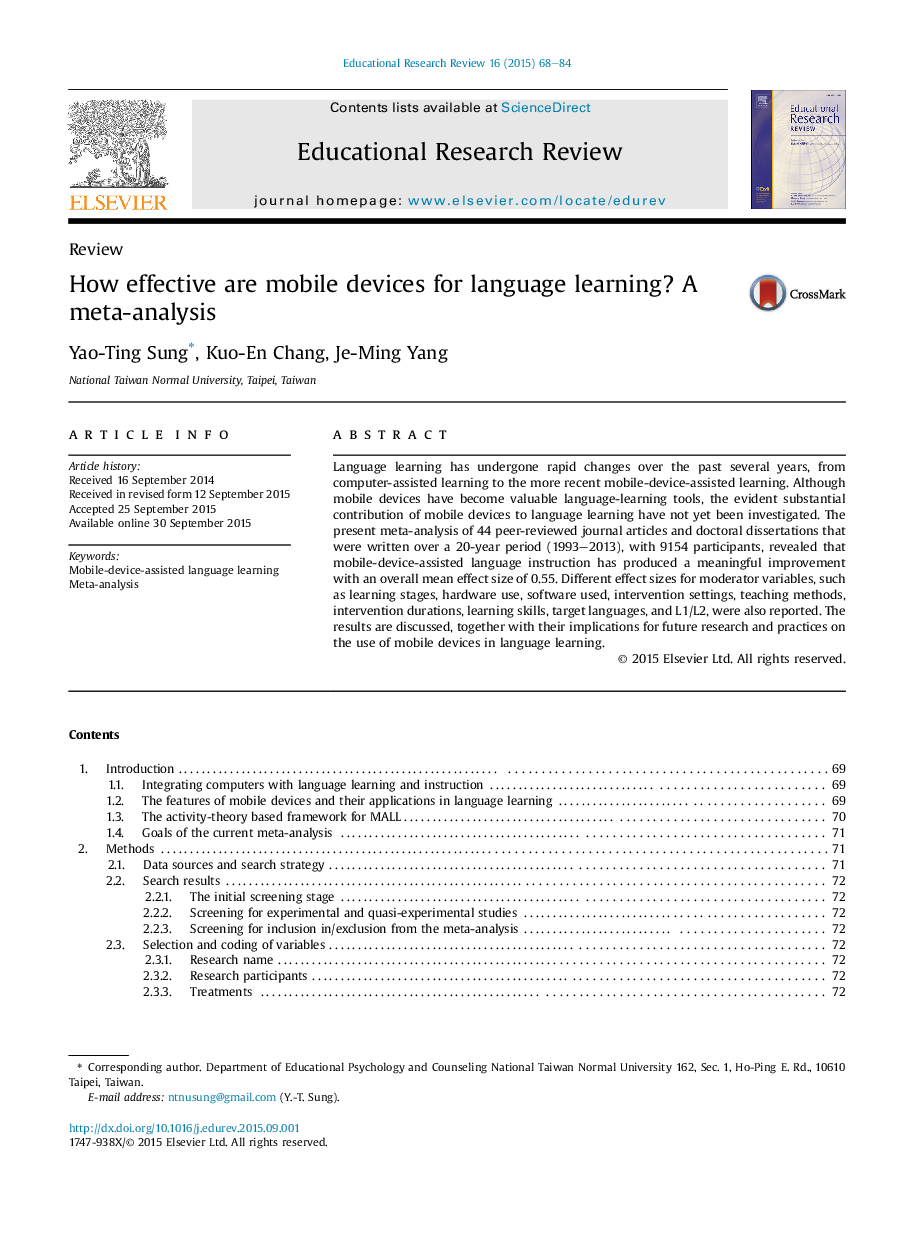| کد مقاله | کد نشریه | سال انتشار | مقاله انگلیسی | نسخه تمام متن |
|---|---|---|---|---|
| 355088 | 619234 | 2015 | 17 صفحه PDF | دانلود رایگان |
• We conducted a meta-analysis on mobile-device assisted language learning (MALL) studies.
• MALL studies showed an overall moderate mean effect size of 0.55.
• The influence of moderator variables on MALL effect sizes differed.
• Quality designs, logistics, and integration may empower MALL programs.
Language learning has undergone rapid changes over the past several years, from computer-assisted learning to the more recent mobile-device-assisted learning. Although mobile devices have become valuable language-learning tools, the evident substantial contribution of mobile devices to language learning have not yet been investigated. The present meta-analysis of 44 peer-reviewed journal articles and doctoral dissertations that were written over a 20-year period (1993–2013), with 9154 participants, revealed that mobile-device-assisted language instruction has produced a meaningful improvement with an overall mean effect size of 0.55. Different effect sizes for moderator variables, such as learning stages, hardware use, software used, intervention settings, teaching methods, intervention durations, learning skills, target languages, and L1/L2, were also reported. The results are discussed, together with their implications for future research and practices on the use of mobile devices in language learning.
Journal: Educational Research Review - Volume 16, October 2015, Pages 68–84
